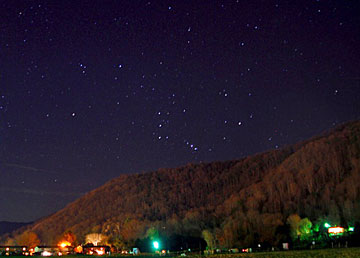 |
|||||||||||||||||||||||||||||||||||||||||||||||||||||||||||||||||||||||||||||||||||||||||||||||||||||||||||||||||||||||||||||||||||||||||||||||||||||||||||||||||||||||||||||||||||||||||||||||||||||||||||||||||||||||||||||||||||||
|
If you have trouble viewing this newsletter, click here. Welcome again to our monthly newsletter with features on exciting celestial events, product reviews, tips & tricks, and a monthly sky calendar. We hope you enjoy it!
Messier Marathon is a term describing the attempt to find as many of the Messier objects as possible in a single night. A marathon held on Saturday, March 17, 2007 promises the prospect of observing all 110 objects in one night. It's a great exercise in speed observing and fun for both experienced and novice observers. The Sun is about to set and even as shadows grow longer in the late afternoon you pack your scope, mount, accessories case, and star charts into whatever it is you're driving these days. Meanwhile, you fill a thermo-bottle with your favorite hot beverage, another with some cool, clear water, and grab a bagful of munchies to reinforce you through the night. First there will be some driving to attend to. You've already got a spot picked out well away from city lights and with a good clear view of the horizon east, west, and south. You'll need a spot like that because you're about to participate in your first - possibly first annual - Messier Marathon! This particular marathon however won't wear out your sneakers or cause your thighs to burn. But it will test your endurance and challenge your ability to navigate a very complicated course... Book-ended by near impossible sky-position early in the evening and late in the morning, you'll have to find 110 astronomical studies over the course of one very long journey into a single night. Impossible? No. Difficult? Yes! And perhaps that's one very good reason to even try... Can you run this particular marathon any time you like? Sure! But there are only a few days in the month of March each year when you're likely to have a chance of catching all 110 of those "high flying" objects in the course of a single night. And that only happens within a day of whatever new moon falls closest to the spring equinox each year. So even as the Sun glides behind the neighbor's low fence, you slide in behind the steering wheel and begin to assess your chances. On one end of the night is that large, faint low surface-brightness galaxy in Pisces – M74 - descending low to the west just above the treetops as rosy-fingered dusk releases the evening sky. On the other end is compact globular cluster M30 ascending even lower to the south-southeast - running its own race against a rising Sun. Then of course there's that sprawling, low contrast Triangulum galaxy – M33. Why, even normally easy-to-find M110 near the Great Andromeda Galaxy could elude you setting as low as it will be to the northwest well before the sky gets really dark. But you are prepared. You've spent every night possible since you bought that Orion Starblast 4.5 EQ, or 12" XT learning your way around the night sky. In fact this whole last week, the weather saw you out a couple hours each night covering Charles Messiers’ official list of deep sky galaxies, clusters, and nebulae. You know exactly what order to find them in (see table below) and how to tell them apart - especially all that galactic fluff in the Coma-Virgo group trailing Leo's hindquarters across the sky.
So, you ask yourself, "Why am I doing this?" Charles Messier spent half a lifetime discovering these things and you’re going to rediscover them all for yourself in a single ten and a half-hour period! But a Messier Marathon only comes around once a year - and this year you’re ready. Found every Messier at least three times already - should be no trouble finding them again – right? Except, now you’re about to separate theory from practice... Many of your earlier finds were under the best possible conditions. You were well rested, fresh even! Meanwhile most ascended from the east at the time, not falling out of the sky to the west with all those constellations turned upside down! So after entering the gate to that grassy knoll you and your astro-buds picked out, you watch the last of the Sun sink below the horizon to the west. Greeted by friends, there's already buzz about sky and local conditions. Is the horizon low enough? Are we too far north to see M30 clear the trees? Will the weather hold throughout the night? Is the sky going to darken early enough to find the toughies before they disappear into the murk west and southwest? Then there are some tactical questions. Will you be using a computer (goto) to point your telescope? And what about setting circles? Or are you going to star hop? Everyone agrees that goto and digital setting circles offer many navigational advantages, but the real challenge is to find your own way around. For purists, star hopping is the essence of a true Messier Marathon! And that leads to more questions. - Do you prefer a true finderscope or a simple unit powered reflex finder? Why both, of course! - One to orient the scope, and the other to minimize sweeping the sky using the main tube. Then there's room for speculation: How much will aperture help? What's the smallest scope that will show all the Messiers in a single night? One of your friend’s mentions that all “M-class” deep sky studies can be seen in astronomical binoculars – but you point out that it will take at least a four inch refractor to find them all in a single night – when a few are low to the horizon and obscured by atmospheric dust and gas.
A little less than an hour passes while you amiably chat up friends, and set up everything needed. Then without the report of a gun or even the toot of a whistle, you're off… Although no clock is ticking, or hamstrings aching, the Sun has already set the pace toward morning. The long night ahead is shorter than you think... With everything in place, you swing the scope toward Polaris. At low power (60x) you can just make out the Pole Star's faint 9th magnitude companion. Then it’s off to Castor in Gemini - nice clean 3 arc second separation! Unaided, you scan the western sky for those two 2nd magnitude stars in Aries - Hamal and Sheratan - pointing the way to 4th magnitude Eta Piscium. Can you see Eta yeta? Great! Centering on Eta, you sweep three full moons (1.5 degrees) east and slightly north to locate M74. Shifting your eye around the true one degree field thrown up by that 60x Stratus wide-field eyepiece, you make out a faint sheen of light disappearing as soon as you try to pin it down by looking straight at it. Not sure? Well try brighter, more condensed Seyfert Galaxy M77 first! Found it? There’s one for confidence, and its back to M74 as the sky fades a tad darker… Does it qualify as a "find" if you can only see a galaxy by tapping the side of the scope with your finger? Or do you have to hold it using direct or averted vision? It's all up to you! This may be Messiers night - but it's your sky, your scope, and your call...
The only reason to challenge yourself like this is to see how much fun you can make of a demanding situation... Remember walk, don't run. Look for Part II of the Messier Marathon series: "What Really Happened?" in the April 2007 issue of the Starry Night® Times. Jeff Barbour
Most asteroids are well behaved and spend their time in the asteroid belt, located between the orbits of Mars and Jupiter. But some venture into our neighborhood: these are known as near Earth asteroids.
VV2 on March 30, 2007 @ 7:00pm 2006 VV2 was discovered by LINEAR on 2006 November 11. It will pass within 0.023 astronomical units of the Earth (8.8 times the distance to the Moon) on the night of March 30/31, uncomfortably close for an asteroid roughly 1.5 km in diameter. It should be at least 10th magnitude in brightness, and so readily observable by typical amateur telescopes.
VV2 on March 30, 2007 2006 VV2’s orbit is quite steeply inclined to that of the Earth, so that the asteroid will appear to be traveling from north to south in our sky. As it approaches Earth, its orbit is slightly farther away from the Sun than the Earth’s, and the asteroid is traveling slightly behind the Earth around the Sun.
As soon as the sky gets dark, it should be easy to pick up with a telescope, if it follows its predicted path…more about that below. Just after midnight, at 12:43 a.m. EDT, it enters Leo and is at its closest to the Earth. It will be traveling across the sky at a speed slightly more than one degree per hour. This is not quite as fast as some near Earth asteroids travel, because 2006 VV2 is moving along with Earth on a parallel track. This gives us a better chance of seeing it. The problem with catching near Earth asteroids is that their orbits are usually poorly known because when first discovered they are coming pretty well straight at us along our line of sight. Then, once an orbit is calculated, it often gets perturbed by the strong gravitational forces of the Earth and Moon. I’ve observed several close asteroid passes, and in most cases the asteroid arrives somewhat ahead of its predicted position, so it’s very easy to miss it completely. The trick is to anticipate its path. Orbital elements for 2006 VV2 will appear several days before the asteroid’s passage in Starry Night®’s asteroid database. Usually our orbital elements are very accurate, but in the case of NEAs, don’t trust them! Use them as a rough guide, but try to get updated orbital elements from the NASA/JPL web site a few hours before the event: Even so, don’t trust the positions. Use Starry Night®’s Celestial Path command (only available in Pro and Pro Plus) to plot the asteroid’s path through the stars. Choose a spot on the path ten or fifteen minutes further along than where you expect the asteroid to be, and then watch that area for the asteroid. In other words, expect the asteroid to be further along its path than predicted. It’s like laying an ambush. Use a wide field eyepiece, one degree field of view or more, in case the asteroid is displaced from its path sideways. Find a suitable group of stars on the path, memorize their relative positions, and then wait for an interloper to appear. Once you locate the asteroid, try to track it. It will be moving noticeably relative to the stars behind it (though more slowly than some asteroids I’ve observed in the past). This is a near perfect opportunity to see a near Earth asteroid: a bright object moving pretty fast, and it’s even on a Friday evening/Saturday morning. The only down side is that there will be an almost full Moon only 20 degrees away from the asteroid in the sky. If you succeed in catching 2006 VV2, be sure to let us know on the Starry Night® Yahoo Group: Even if you miss it, report in to let us know you tried. Good hunting! Geoff Gaherty
We’re excited to attend and meet with over 20,000 K-12 teachers, administrators, school board members, PTA and policy makers from the New York Metro area. Stop by the Starry Night® Education booth for “Honk if Pluto’s a Planet” bumper sticker! Register for this conference:
The 55th Annual National Science Teachers Association National Conference Stop by for a preview of Starry Night® Elementary and a “Honk if Pluto’s a Planet” bumper sticker. Attend any one of our 8 workshops!
Register for this conference: Linda Fung |
MAR 2007
|
||||||||||||||||||||||||||||||||||||||||||||||||||||||||||||||||||||||||||||||||||||||||||||||||||||||||||||||||||||||||||||||||||||||||||||||||||||||||||||||||||||||||||||||||||||||||||||||||||||||||||||||||||||||||||||||||||||
|
Pluto is a small, mysterious world, deep in the cold, dark recesses of the distant outer solar system. It was named a planet when it was discovered in 1930, but that designation has been in dispute for some years now. The issue was settled in August of 2006, when the International Astronomical Union reclassified Pluto as a dwarf planet. The reclassification is a result of new and better information that, in turn, came from improved technology and observing methods. It’s a beautiful example of the scientific process in action. Science is not a static body of facts, but an active process subject to constant revision. Theories are tried and tested. If they fail they are discarded. Old information sometimes turns out to be inadequate. New information can change our understanding of the world (and universe) around us. It helps to remember the history of astronomy is a history of changing worldviews as a result of new and better data. And we want the science process to continue. Refining the classification of solar system objects does not change the nature of Pluto. It is still a small, rock and ice body far away from the Sun. We don’t know a lot about Pluto. We want to lessen the mystery and learn more about this distant world. In the process we’ll learn more about the rest of the solar system and our history in it.
Figure 1. The inclination of Pluto’s orbit is one factor But it’s not easy to get there. Distance alone is not the whole problem. Pluto’s orbit lies at a 17-degree tilt (figure 1) from that of the eight major planets, making the trip more of a challenge. But just over a year ago, in January 2006, the New Horizons mission to Pluto was launched. And right about now, the largest of the Jovian planets is playing a key role in the flight of New Horizons.
Figure 2. New Horizons makes its close On February 28 this year, Jupiter will give the New Horizons spacecraft a big gravitational push (see figure 2), speeding it on its way to a rendezvous with Pluto and its moon, Charon, in 2015. Jupiter will add another 9000 mph to the spacecraft’s speed, flinging it out toward its target at 52,000 mph. New Horizons is the fastest spacecraft ever sent into the solar system.
Figure 3. When you look at Jupiter this month, you’re also You can see where New Horizons is this month by finding Jupiter in the early morning. Look low in the southern dawn sky at about 6:00 a.m. That bright “morning star” in figure 3 is the planet Jupiter. The little space probe, invisibly tiny, is there too. If you look at Jupiter with binoculars, you can see Jupiter’s four largest moons as tiny points of light. They are all bigger than Pluto. Now imagine trying to study something the size of those tiny moons but eight times farther away! That gives you an idea of how difficult it is to study objects in the outskirts of the solar system. When New Horizons arrives at its destination in 2015, some of Pluto’s mysteries will be solved. As is often the case in science, answering one question leads to the formation of ten new questions. We have a lot of exciting new science to look forward to at Pluto! Mary Lou Whitehorne |
|||||||||||||||||||||||||||||||||||||||||||||||||||||||||||||||||||||||||||||||||||||||||||||||||||||||||||||||||||||||||||||||||||||||||||||||||||||||||||||||||||||||||||||||||||||||||||||||||||||||||||||||||||||||||||||||||||||
|
Larry Krumenaker, a Ph.D. student at the University of Georgia and a former high school physics and astronomy teacher, is writing a dissertation that looks at the current status and makeup of high school courses dedicated to astronomy; how teachers express why the course should exist; and how No Child Left Behind has affected astronomy teaching. The field has not been surveyed since the early 1990’s, since before NCLB and even before the full effect of national standards in science or standardized testing in general. When every high school is sweating to the reading and math testing of No Child Left Behind, how does an astronomy class manage to exist? And what does the class look like compared to those of previous decades? The findings could help schools that want to have astronomy courses in the future, or maintain them in the present. He is looking for teachers who have taught, or do teach now, a bona fide course in astronomy at the high school level to participate in this survey. It doesn’t matter if you are a regular classroom teacher or a planetarium educator. Your name and school identification information will be removed from the dissertation and future published articles so you can be assured of confidentiality. If you are in a school that has had astronomy but dropped it, or a science supervisor or administrator in a school that has never had one or had to drop it, he would like to contact you as well. If you agree, your participation consists of completing a survey, which may take 30-45 minutes at most. A few teachers will be interviewed. Your voluntary participation in this project will take place at one of two times, March or September 2007. If you are interested in helping assess the national view of astronomy at the high school level, please contact Larry Krumenaker by email at lkrumena@uga.edu. A more formal invitation to participate will be emailed to you. You may also mail an inquiry to Larry Krumenaker, Dept of Math and Science Education, 212 Aderhold Hall, University of Georgia, Athens, GA 30602. Linda Fung |
|||||||||||||||||||||||||||||||||||||||||||||||||||||||||||||||||||||||||||||||||||||||||||||||||||||||||||||||||||||||||||||||||||||||||||||||||||||||||||||||||||||||||||||||||||||||||||||||||||||||||||||||||||||||||||||||||||||
|
Visible towards the southern horizon from winter through spring in the northern hemisphere, Orion is one of the most easily recognizable and beloved constellations. By far, the most popular celestial gem in the constellation of Orion is M42, The Great Orion Nebula. Although it is 1500 light-years away, M42 is a great target to view in small telescopes. This is due not only to its brightness, but also to its wonderful cloud structure, which in telescopes takes on a clearly three-dimensional shape. Observers new and old come back to M42 time and time again because of the wealth of detail visible: pinpoint stars hang among uncanny, ghostly tendrils of glowing hydrogen that stream across space for trillions of miles. Astronomers call M42 a stellar nursery; when you look at this giant gas cloud you are seeing what our own solar system might have looked like billions of years ago. The nebula's reddish coloration (visible only in photographs) betrays the ionized hydrogen that predominates the composition of the cloud, but carbon monoxide and other complex molecules have also been detected. When viewed through a large telescope, the cloud takes on a wonderful greenish hue. T A fun challenge for amateur astronomers is to "bag" the two 11th magnitude E and F stars, shown here in green. Their proximity to far brighter stars makes them difficult to separate on nights of so-so seeing. On great nights, discerning the E and F stars is a good test of your telescope's optics. More Targets The Horsehead Nebula was made famous from its beautiful photographs – it really does resemble what its name implies! The Horsehead can be found just below Alnitak (the leftmost/easternmost star in Orion's belt). The Horsehead is an extremely difficult target for medium aperture telescopes, and requires steady and dark skies to be seen even in a larger telescope. A far easier nebular target in the same area can be found above Alnitak: Located above Orion's belt, M78 belongs to the same large cloud of gas and dust as the main Orion nebula (M42). It has 2 companion nebulae (NGC 2067 & 2071). All 3 are reflection nebulae, and M78 is in fact the brightest reflection nebula. It is visible in binoculars but best seen through a telescope. NGC 2022 is a bright planetary nebula: a dying sun peeling off its outer shell. Because planetary nebulae are best viewed at high magnification, you should start out low (40x) to find the object, and then try 100x and 200x. The name "planetary" is misleading, as these objects are not planets at all but stars at the end of their life cycle. However, they do look something like cloudy planets, and this fact confused earlier observers whose incorrect naming convention has stayed with us to this day. NCG 2174 is a bright but diffuse emission nebula, a cloud of hydrogen gas very close to a young hot star (or multiple stars). In such clouds, energy from the stars heats up the hydrogen to 10,000°K until it glows with the distinctive red color one can see in long-exposure photographs. Betelgeuse is the only red star in Orion. Not only does this make it easy to identify, it also tells us we are looking at a giant star. Betelgeuse (pronounced beetle juice by most astronomers) derives its name from an Arabic phrase meaning "the armpit of the central one." The star marks the eastern shoulder of mighty Orion, the Hunter. Another name for Betelgeuse is Alpha Orionis, indicating it is the brightest star in the winter constellation of Orion. However, Rigel (Beta Orionis) is actually brighter. The misclassification happened because Betelgeuse is a variable star (a star that changes brightness over time) and it might have been brighter than Rigel when Johannes Bayer originally categorized it. Betelgeuse is an M1 red supergiant, 650 times the diameter and about 15 times the mass of the Sun. If Betelgeuse were to replace the Sun, planets out to the orbit of Mars would be engulfed! Betelgeuse is an ancient star approaching the end of its life cycle. Because of its mass it might fuse elements all the way to iron and blow up as a supernova that would be as bright as the crescent Moon, as seen from Earth. A dense neutron star would be left behind. The other alternative is that it might evolve into a rare neon-oxygen dwarf. Betelgeuse was the first star to have its surface directly imaged, a feat accomplished in 1996 with the Hubble Space Telescope. On the western heel of Orion, the Hunter, rests brilliant Rigel. In classical mythology, Rigel marks the spot where Scorpio, the Scorpion stung Orion after a brief and fierce battle. Its Arabic name means the Foot. Rigel is a multiple star system. The brighter component, Rigel A, is a blue super giant that shines a remarkable 40,000 times stronger than the Sun! Although 775 light-years distant, its light shines bright in our evening skies, at magnitude 0.12. Telescope observers should be able to resolve Rigel’s companion, a fairly bright 7th magnitude star. A heavy star of 17 solar masses, Rigel is likely to go out with a bang some day, or it might become a rare oxygen-neon white dwarf. Don’t forget to compare the colors of Betelgeuse and Rigel on your next outing under the stars! Sean O'Dwyer, Starry Night® Times Editor |
|||||||||||||||||||||||||||||||||||||||||||||||||||||||||||||||||||||||||||||||||||||||||||||||||||||||||||||||||||||||||||||||||||||||||||||||||||||||||||||||||||||||||||||||||||||||||||||||||||||||||||||||||||||||||||||||||||||
|
Larry N. Souders took this image of Mightly Orion rising over Lynn Mountain near Elizabethton, TN just before Christmas. Shot with a Canon EOS 1D Mark IIn 400 ISO 30 seconds at f 3.5.
PRIZES AND RULES: We would like to invite all Starry Night® users to send their quality astronomy photographs to be considered for use in our monthly newsletter.
Please read the following guidelines and see the submission e-mail address below.
|
|||||||||||||||||||||||||||||||||||||||||||||||||||||||||||||||||||||||||||||||||||||||||||||||||||||||||||||||||||||||||||||||||||||||||||||||||||||||||||||||||||||||||||||||||||||||||||||||||||||||||||||||||||||||||||||||||||||
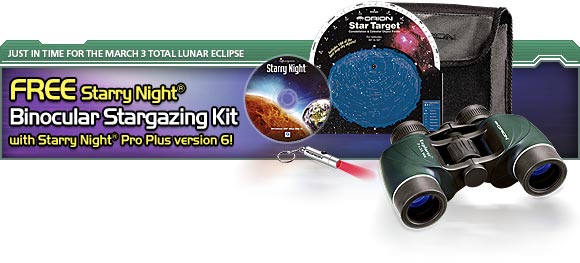 |
|||||||||||||||||||||||||||||||||||||||||||||||||||||||||||||||||||||||||||||||||||||||||||||||||||||||||||||||||||||||||||||||||||||||||||||||||||||||||||||||||||||||||||||||||||||||||||||||||||||||||||||||||||||||||||||||||||||
|
|
|||||||||||||||||||||||||||||||||||||||||||||||||||||||||||||||||||||||||||||||||||||||||||||||||||||||||||||||||||||||||||||||||||||||||||||||||||||||||||||||||||||||||||||||||||||||||||||||||||||||||||||||||||||||||||||||||||||
You have received this e-mail as a trial user of Starry Night® Digital Download
or as a registrant at starrynight.com. To unsubscribe, click here.
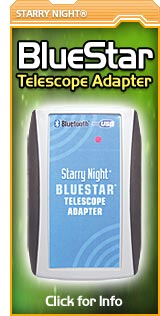

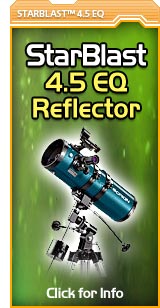
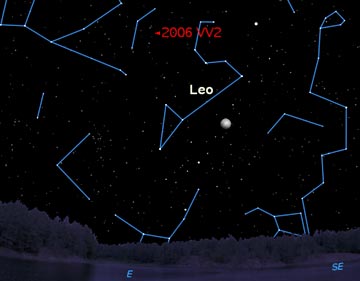
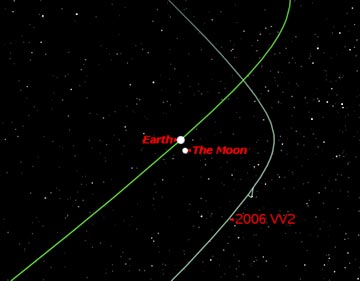
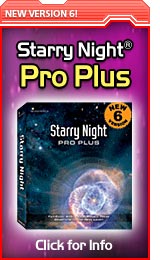





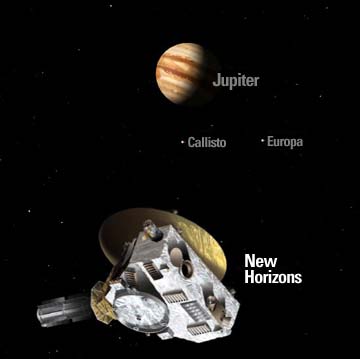
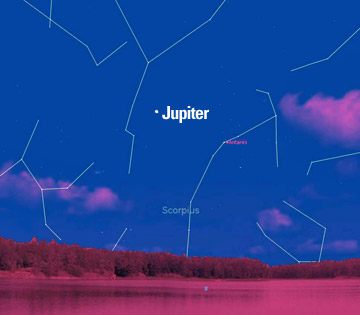
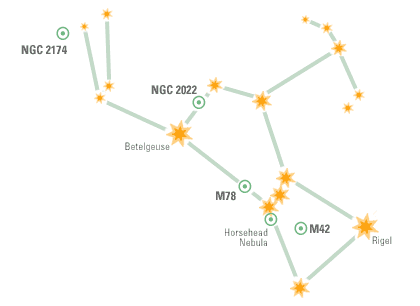
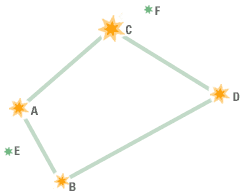 he energy that keeps the nebula glowing so bright comes from the very hot, young stars in the brightest part of the cloud. Known as the Trapezium, this formation of four stars (from west to east: A, B, C, and D) is visible in most backyard telescopes.
he energy that keeps the nebula glowing so bright comes from the very hot, young stars in the brightest part of the cloud. Known as the Trapezium, this formation of four stars (from west to east: A, B, C, and D) is visible in most backyard telescopes.